So far, my September reads seem to focus on madness. I’m not sure why this is the theme I’m gravitating so heavily toward this month, but here we are. I will endeavor to find something more cheerful to read next week because it’s probably not great for my mental health to be so fixated on this topic. Perhaps I need a cozy fantasy to lighten the mood. I’ll look at my shelves and see what I can find.
I’ve also found myself watching old movies on YouTube. It all started with finding That Hamilton Woman the other day, and now I’ve started watching old adaptations of Sherlock Holmes and terrible monster films. I think the cooler weather has me in the mood for spooky season. Is it too early to start putting out my Halloween decorations?
I’m a BookShop.org affiliate! Full disclosure: I will receive a small commission should you order books using my links.
Book Things:
Currently Reading:
Look at me reading a reasonable number of books at one time.
The Little Friend by Donna Tartt: Many weeks ago, I started a long reading vlog where I’m re-reading all of Donna Tartt’s published works to try to summon a fourth book from the literary gods. I finished The Secret History many weeks ago, and it was time to restart The Little Friend. I attempted to read Tartt’s sophomore novel about two years ago and failed. The writing and the character studies are top-notch (I expect nothing less from Tartt), but I couldn’t get into the story. I felt like it wasn't going anywhere, and I DNF’d it around the 40% mark.
The plot centers around a family of women in the aftermath of the tragic death of young Robin during a Mother's Day celebration. Robin’s sisters grow up in the shadow of his murder. His sister Harriet, in particular, is dead set on finding out who killed him. I love Harriet’s determination and Allison's (his other sister) kind heart. This is set in 1960s Mississippi, and religion and racism hang heavy over the lives of our characters. The language used by our characters can be rough to read, but I’m determined to finish this time. I just hope it’s worth the effort. (24%)
There Are Rivers In The Sky by Elif Shafak: This is my second time reading Elif Shafak, and I’m only a third of the way through, but I can already tell this will be another favorite. In There Are Rivers In The Sky, we’re following three characters: Arthur, living along the Thames in the mid-1800s; Narin, living by the Tigris in 2014; and Zaleekhah, living on a houseboat on the Thames in 2018. I can’t wait to know how all three timelines will converge. At the same time, we’re following how water from the tiniest tear to a great ocean connects us all across time and space. The writing is stunning, the characters engaging, and I can’t believe this wasn’t on the Booker longlist! (33%)
Lies and Sorcery by Elsa Morante: I finished another chapter, but there’s still so much left [insert crying face]. (69%)
Recently Finished:
Welcome to the Madhouse…
The Princess of 72nd Street by Elaine Kraf: I read this with
, and I’m so glad she introduced me to this book. I’d never heard of it before she mentioned it in a recent newsletter. And I’m delighted to have a new addition to my “Women and Madness” reading list.“Alan was your usual man in many ways with the inevitable Catch-22, Portnoy’s Complaint, The Naked Lunch, The Alexandria Quartet, Lolita, Shōgun, The French Lieutenant’s Woman, and Masters and Johnson’s research books on his shelves. He also had a subscription to the New York City Opera and a collection of Baroque records. This is the type of man I usually don’t get along with but I try to keep an open mind.”1
We follow Princess Esmeralda of 72nd Street as she experiences her seventh “Radiance” or manic episode. It’s a wild, depraved, and funny ride. When the manic episode ends, and Esmeralda sobers back into Ellen, she must face all that happened during that joyous and terrifying period. Ellen’s humor softens the edges of an otherwise depressing tale of a woman struggling with mental illness with little to no support. She can be savage when she rips into the men in her life, and I loved her philosophizing.
“I am not going into a mental hospital this time to have them take it away with Thorazine. But it is not going to be easy to have the radiance and watch my behavior at the same time.”
“I have no suicidal or homicidal feelings at this time—I only have those when I am so-called sane.”
“It is too bad isn’t it that society is so intolerant of changes in personality—so much so that I must stay here working, telling instead of fully experiencing the radiance. It shows. Never think it is something that can be hidden. The police are what concern me and incarceration and of course my tainted reputation as royalty.”
During the radiance, Ellen’s life becomes filled with questionable men who want her for her body, and she wants their attention. She finds herself in dangerous and abusive situations with these men, allowing them to do whatever they want with her. She’s often taken advantage of, which she finds freeing and beautiful during the frantic haze of her manic episodes, but the glamor fades when the episode is over. She wants to share the joy of radiance with the world, but she’s left quite literally bruised and battered, trying to pick up the pieces of all that occurred during that period of shimmering light.
“There is no beauty here—everything is chaotic, displaced, old, worn, and tired. I am. I feel like one of those cheap, sequinned scarves that lie sadly on the floor. Everything has been disturbed and mutilated. It is wrong. The end should be more gradual—not like suddenly hitting the bottom of a pit.”
“Shouldn’t I be happy, though, having passed through Radiance 7 without incarceration, without drugs, without being accosted by the police? Perhaps it is not really over, and if I continue sitting here something will re-trigger its peculiar chemistry and it will return. I hope so. Oh please! It is much too dark. I have no idea how long Radiance 7 has lasted. Why am I covered with bruises as though I have been beaten and raped? My head aches. Where are you my radiance? I cannot bear the stench in this room.”
“I was radiant then. Even so, some things should never have happened. At least my body should have been treated with respect.”
But Kraf doesn’t just explore Ellen’s madness and mental health. She calls into question the sanity of all the characters in Ellen’s life. We’re left to question what sanity is. Who determines madness when even your therapist has a psychotic break? “The novel also explores the question of how much happiness we are allowed as individuals, and the line between mania and a state of spiritual grace.”2 There are no clear answers. The mind is nebulous and doesn’t conform to one set of rules.
I can’t say I’ve ever read anything quite like this before. This hasn’t become a new favorite, but I’m still glad I read it, and I recommend it to anyone interested in reading about women and madness.
Owls Do Cry by Janet Frame: Owls Do Cry is a modernist masterpiece about mental health, poverty, grief, disability, and conforming to societal norms. We follow the Withers family and their struggles first in post-war New Zealand and later as the children age. Frame gives us a look into the lives of an ordinary family struggling to make ends meet and survive after a tragic loss.
“Francie Withers is dirty. Francie Withers is poor. The Withers haven’t a weekend bach nor do they live on the South Hill nor have they got a vacuum cleaner nor do they learn dancing or the piano nor have birthday parties nor their photos taken at the Dainty Studio to be put in the window on a Friday.”
Mom and Dad Withers struggle to feed and clothe their children. Francie is forced to leave school early to help support her family. Unfortunately, Francie has a tragic accident which sends her siblings down different paths trying to cope with the loss. Daphne suffers a psychotic break and is institutionalized. Toby, already struggling with epilepsy and the judgment of his fellow students for his fits grows up to be fixated on making money. He has a rich interior monologue, but externally, he’s focused on whatever odd jobs will earn him enough money to take care of himself and his aging parents. Meanwhile, young Chicks marries well, moves away, and is determined to live as conventional a life as possible. She isolates herself from her family to protect them from any shame and madness that might rub off on her or her children.
“…oh it was all tangled, being alive was tangled, and there was Francie going by herself every day to face it and fight it. What if she were caught and choked and never came back?”
Daphne’s storyline was particularly difficult to read. She’s locked in an institution, lost in her own mind, completely unaware of what is about to happen to her. When we finally meet her, she’s being prepped for a lobotomy. Everyone is telling her this will cure her, but we, the readers, know this is no cure. There’s a palpable dread as the time for her surgery gets closer. I wanted to scream at the nurses, “STOP!” while they cut her hair and let her see her father for the first time in years. The Withers family had the best intentions with all their children, even Daphne. But that still doesn’t protect her from the horrors of ECT and lobotomy. These scenes with Daphne were the most tender and heartbreaking.
“Bob Withers was afraid. He had heard of people disappearing inside these hospitals, and then, when they said they were visitors, no one would let them out, and no one believed them. Why, anything could happen in a hospital like this, after all, it was still the dark ages.”
Frame wraps up this slim novel with an epilogue that leaves us questioning what separates us from the Withers family. They can be any of us. We are all capable of madness. We’re all victims of life’s circumstances. Some of us bury ourselves in work and domestic duties, and some of us have mental breaks. There’s no rhyme or reason to which you’ll become.
The Mad Women's Ball by Victoria Mas (Translated by Frank Wynne): You guessed it, another book about mad women. But this one also deals with the supernatural! It’s 1885, Dr. Charcot is hypnotizing the women of The Salpêtrière Asylum and delighting all of Paris. Salpêtrière houses the madwomen of Paris, but who decides they are mad? Men can lock up their wives and strong-willed daughters simply because they no longer find them desirable or their behavior inconvenient or “unseemly.” What happens to the women inside Salpêtrière? What horrors exist behind its walls? The Parisian elite are equally terrified and fascinated by these women. They look forward to the annual Mad Women’s Ball, where they can ogle the mad women in style.
“Beyond the walls of the Salpêtrière, in fashionable salons and cafés, people speculate about what Professor Charcot's clinic for hysterics' might entail. They imagine naked women running through the corridors, banging their heads against tiled walls, spreading their legs to welcome some imaginary lover, howling at the top of their lungs from dawn until dusk. They picture lunatic bodies convulsing under starched white sheets, faces grimacing beneath a tangle of hair, the wizened countenances of old women, obese women, ugly women, women who are best kept confined, even if no one can say precisely why, since the women have committed no sin, no crime. For those troubled by the slightest eccentricity, whether bourgeois or proletarian, the very thought of these 'hysterics' kindles their desire and feeds their fear. Madwomen fascinate and horrify. Were these people to visit the asylum for the late-morning rounds, they would surely be disappointed.”
It sounds amazing, right? Well, it was fine. We follow several characters, the main two being Eugénie, the daughter of a bourgeois family who is outspoken and claims to see spirits, and Geneviève, the head nurse at Salpêtrière. In time, the two form an unlikely alliance that forever changes their lives.
I enjoyed the incorporation of spiritualism, a growing trend in the late 19th century. Even Sir Arthur Conan Doyle had an unshakeable belief in spiritualism following the death of his son. Making Eugénie a spiritualist and medium was an interesting choice. Just because we can’t see something, does that mean it’s not real? Eugénie’s parents can't see the Holy Spirit, and yet they believe. What makes one madness and the other faith?
I also enjoyed the portrayal of Salpêtrière as both a place of fear and a place of sanctuary. For some of the women, Salpêtrière is the only home they know of. For others, it’s given them a sense of safety and security they never had on the streets of Paris. We see one character struggle to accept her discharge orders. I was reminded of Bruno from Shawshank Redemption, who hangs himself after serving a 50-year sentence because he cannot adjust to the outside world. When does a prison become a home?
Unfortunately, this book suffered from being too short with uneven pacing. I would have loved this more if there had been more depth to the characters and more historical fleshing out of Salpêtrière, Dr. Charcot and his methods, the women of the asylum, and even the ball. Instead, we scratch the surface of our characters and the setting and rush through the ball to the conclusion. There is a film adaptation from 2021, and I wonder if it plays better as a film. I’ll have to watch it and report back.
Swallow the Ghost by Eugenie Montague: What an interesting book. Was this a perfect five-star read? No, but I need to read more Eugenie Montague after reading her debut.
Like Trust by Hernan Diaz, Jane’s story is told in three parts. First, we meet Jane, who tells us in her own voice about her life, her struggles with her body, and her conflicted relationships with two men. We learn about her work, her friends, and her routine. And then her story ends. Next, we meet Jesse, an investigator working for the lawyers representing Jane’s boyfriend, Jeremy, who’s accused of Jane’s murder.3 Jesse is struggling to care for his mother, who has dementia, while he pieces together Jane’s life to figure out what actually happened to her (and to clear Jeremy’s name if he can). And finally, Jeremy gets to speak about Jane in his own words via a podcast interview. But it’s less about Jane as a person and more about how her murder, or more accurately being accused of her murder, affected his ability to write.
“It’s not like she never existed—Jane—but somehow that person, the Jane I knew, has nothing to do with what’s happening now. That Jane disappeared. She disappeared a little when she died, like we all do. Not only the body, not only the pulse, but the person who had the capacity to act and speak and defy whatever you’ve decided they are—the version of a person that exists in service to your life. When a person dies, their resistance to that service falls away. Every memory with them, every exchange—it can be exactly what you need it to be, and they can’t show up to challenge it anymore. I think that’s what Marías actually meant when he said those who are killed die more deeply. Because every memory, every event, has to be read through the murder, to figuring out who and why. And that portion of the person who was just herself is diminished even more in service of the mystery.
“Once you’re the accused, that person—the person they were before they died—essentially ceases to be altogether. I can’t even remember her, because every memory, every event, it’s not something she said or did, it’s something that goes in the plus or minus column: suspicious or not suspicious, cause or effect. And so I understand why we have to do this. I’m not an idiot. But what can I tell you when I can’t get anywhere near the Jane you’re asking about, the Jane who used to wake up in my bed and call me back when I called her?”
Montague is looking at who gets to tell our story when we can’t speak for ourselves. Who do we become when viewed through the eyes of others? It’s also about the way we pick apart the lives of victims. How do we judge them for things that have nothing to do with their murders? Jane struggled with ED, and her best friend, Kaya, feared that if it got out, it would paint her as unstable. But who cares if she is unstable? Does that change the fact that she was murdered? Does that excuse the crime?
“I know how these trials go. Everyone does. You don’t have to be in law school. She’s going to be the one dissected on all fronts, and the only thing she did was get murdered.”
Mixed in with Jane’s story is Jesse’s struggle to be a caregiver to his mother. I loved this subplot. It’s easy to underestimate the strain of caring for a loved one, especially when you don’t know how. Dementia patients are challenging. It’s hard living in the loop of their dwindling memories. It’s easy to get frustrated and angry. But there are also beautiful moments of clarity or shared memory that make you cry (or maybe they just make me cry to read about).
“I think about this moment a lot now, what it feels like to experience something you know you will remember forever when the other person won’t even remember it in the morning. It’s a terrible disease, Gloria says, and it is. But sometimes, I think about this: When the pain gets too bad, the body protects you and you black out. Maybe some people aren’t meant to be there at the end, to grapple with mortality and see life taken away in pieces, to say goodbye to people they cannot say goodbye to. Or maybe more of life is like this than we think. How many moments never make a memory? How many moments do people live through together that are experienced so differently by each of them, it’s almost like they didn’t experience something together at all?”
I didn’t like the final section with Jeremy. It felt lackluster compared to the other sections. If someone else was going to speak for Jane, I would have preferred to end with her friend Kaya or even bring it back to Jane somehow. Let her ghost speak or find a diary entry—anything to give her back her voice. Jeremy speaking about Jane felt too self-serving. I wanted more for her.
JEREMY: Everything I write is about Jane. I haven’t written anything that isn’t about Jane since she died.
DAVID: Book seven was five hundred pages and didn’t mention her once.
JEREMY: It was a meditation on grief, David. Why would I write a five-hundred-page meditation on grief if not for Jane? I could write scenes with Jane in them till the end of my days, and it wouldn’t solve the problem that I can’t write about this. I started writing scenes about Jane, and it turned into an algebra problem.
All in all, this was a fantastic debut. I want more.
Just in from publishers:
(Thank you to all the publishers who send me books for spotlight and review. I will never get over how bonkers it is that this happens.)
Haunt Sweet Home by Sarah Pinsker (Out now from Tordotcom): “On the set of a kitschy reality TV show, staged scares transform into unnerving reality in this spooky ghost story.” It’s billed as “a multifaceted, supernatural exploration of finding your own way into adulthood, and into yourself.” ‘Tis the season for spooky reads, and Haunt Sweet Home sounds like it will be chillingly good fun!
Devils Kill Devils by Johnny Compton (Out September 24, 2024, from Tor Nightfire): I read and loved Compton’s first book, The Spite House, and I’m excited to see what he does with his new novel Devils Kill Devils. His new Southern gothic horror is filled with monsters - angels, devils, vampires - and one woman’s terrifying race against the hordes of hell. I can’t wait!
3, 2, 1, Round-up:
(AKA Random Non-Bookish Things Because I Totally Have Other Interests)

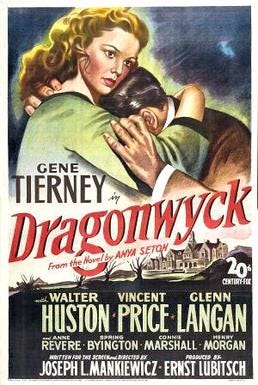
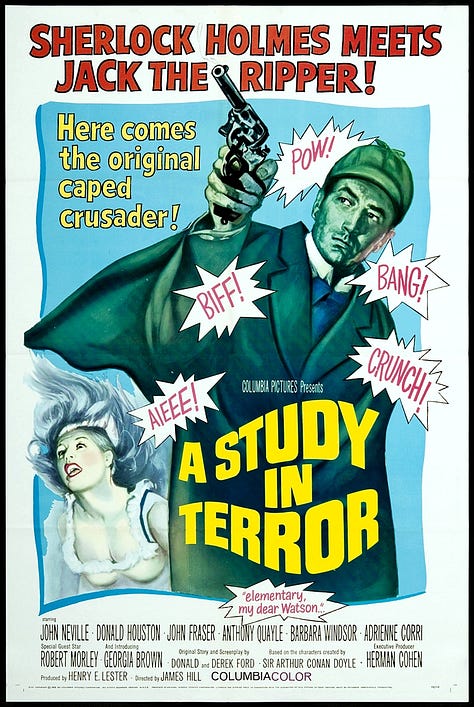
Three Random Movies:
As I mentioned at the start, I was in the mood for cheesy mystery/monster movies this week. While I can’t say I loved these, they amused me and put me in the mood for spooky season.
The Gorgon (1964) - Starring no one I’ve ever heard of. A mysterious monster called Megaera is turning people to stone in a remote German village in 1910. We open with Bruno and his pregnant girlfriend running off into the woods during the full moon. The girlfriend sees Megaera and turns to stone. Bruno kills himself and is presumed the murderer. His father and brother come to town to help clear Bruno’s name. They suspect the local doctor and his beautiful assistant are covering up what’s happening in these woods. The mythology is all wrong (there is no gorgon named Megaera)4, the special effects are downright laughable, and there’s instalove, which is simply cringe. But I had a good laugh.
Dragonwyck (1946) - Starring a young Jessica Tandy as Peggy! Provincial and piously raised, Miranda Wells is invited by her mysterious cousin to move to Dragonwyck Manor and act as a companion to his daughter. It all seems like a fairytale dream initially, but things take a nightmarish turn. Her cousin Nicholas has a troubled relationship with his tenant farmers and a strained relationship with his wife, and he and his daughter seem to be the only ones who can hear the ghostly music played by Nicholas’s dead grandmother. When Nicholas’s wife dies, he marries young Miranda, and the fairytale shatters. I enjoyed the general plot of this one, but I want it to be darker. I was hoping for the sinister and suspenseful cinematography of Rebecca and kept having to remind myself I was not watching Hitchcock. Once I lowered my expectations, I found myself enjoying the film. But I want to know more about this family curse. The movie only hints at it. The movie is based on the book by Anya Seton. I’m curious to see if the book is darker than the film. Perhaps I can thrift a copy.
A Study in Terror (1965) - Starring a young Judy Dench! Essentially, this is Sherlock Holmes meets Jack the Ripper, where all the prostitutes look like Victorian Barbarella. Sadly, Dame Judy is not a prostitute but a dear, sweet lady helping the poor of Whitechapel. Honestly, this wasn’t very good. But I’m a sucker for a Sherlock Holmes adaptation, so I had to watch it. And now I want bangs again.
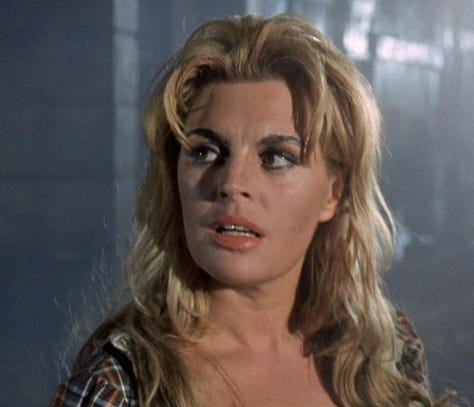
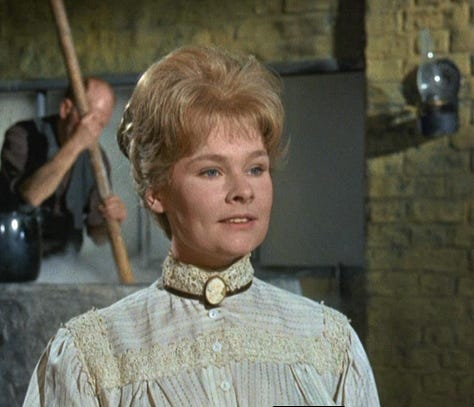
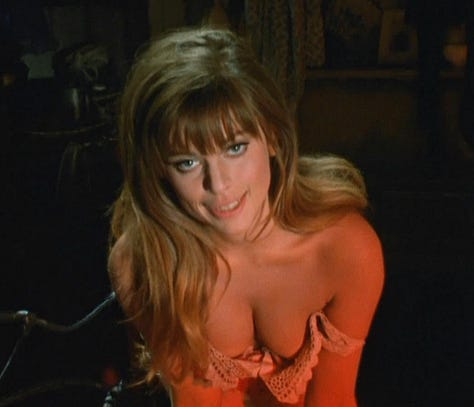
Two Videos to Watch:
We need to talk about National Novel Writing Month (aka NaNoWriMo) and how it’s once again in hot water. Last year, it came out that someone from the organization was allegedly grooming kids on the online forums—and had been for a very long time before the board did anything about it. And this year, NaNoWriMo is doubling (or is it tripling) down on generative AI being an acceptable way to write a book. It’s messy, and I’m sad to say I will no longer participate in NaNoWriMo.5
My friend Kim found this channel, and I’m obsessed with this TBR game. Typically, I don’t use things like TBR Spin, a TBR jar, or anything else to pick what I’m reading each month. I tend to go where the literary winds take me. That was until I saw this game. I need to try the digital version in October because this looks like so much fun. Do I need to gamify my reading? No, but it seems like a good time.
One Adorable Picture of Alfie
SITREP is a free weekly newsletter about books and things. If you want to support my work, consider becoming a free or paid subscriber. You can also simply like and share this post with your friends.
Thank you for reading. See you next week!
She might be mad, but she’s also funny and observant.
From the introduction by Melissa Broder.
This book has too many J names.
Megaera is a Fury, not a Gorgon.
Jess Owens and I are workshopping our own writing challenge in October, so stay tuned. The tentative name is Chaos Demon Writing Challenge—please help! We need something snappy that can make a fun acronym.




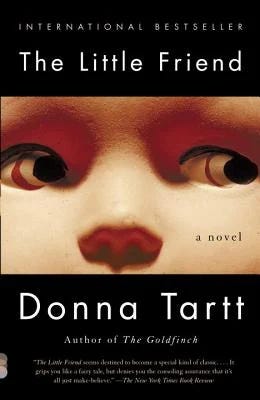


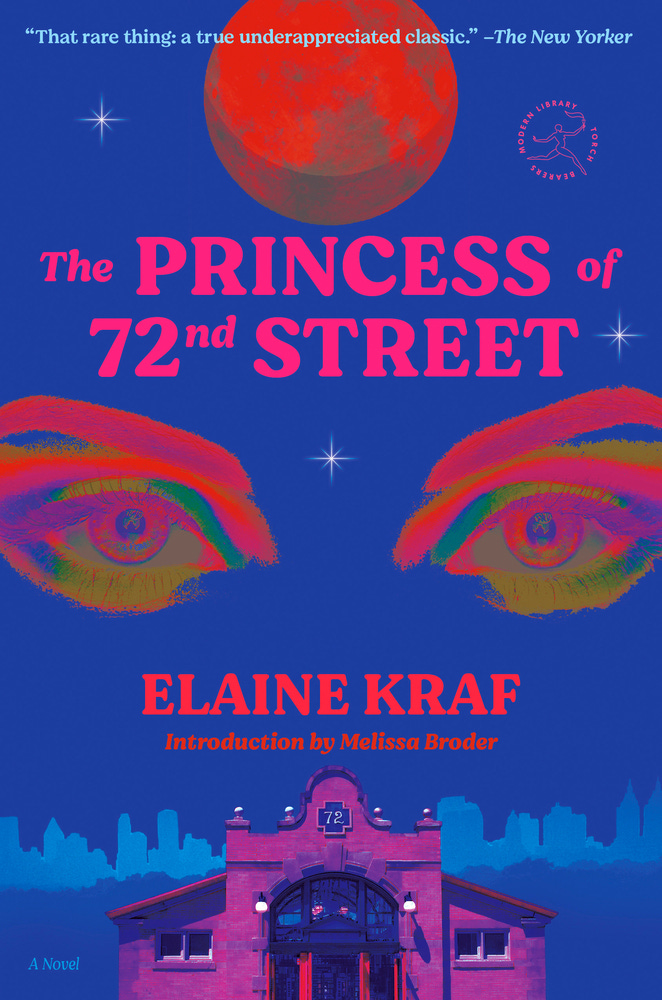
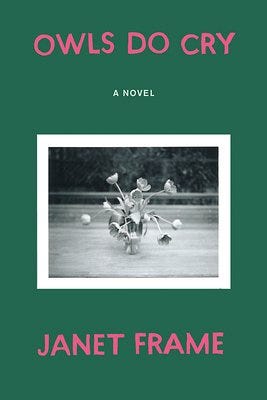


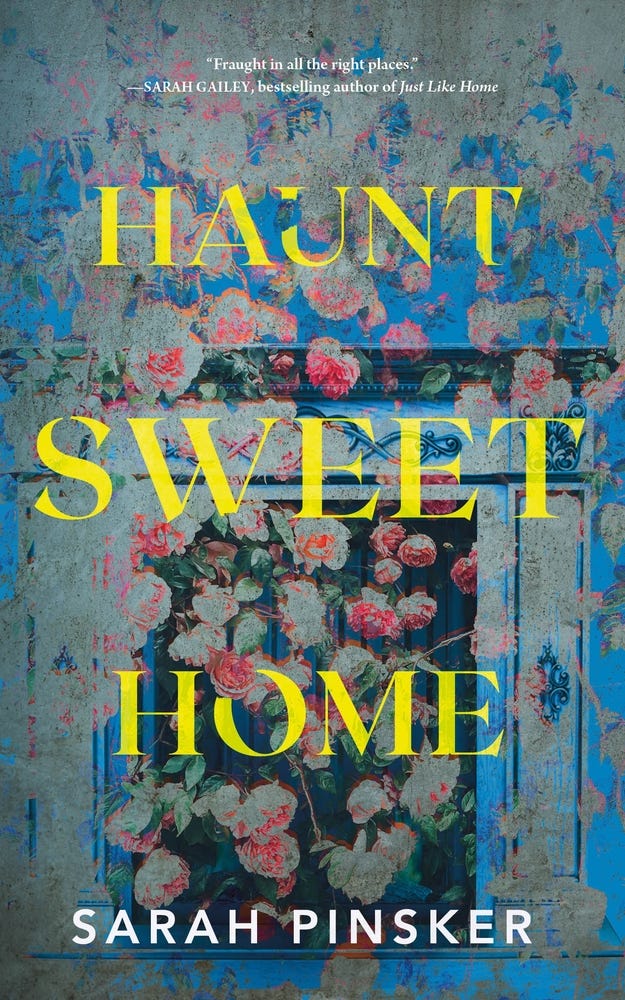
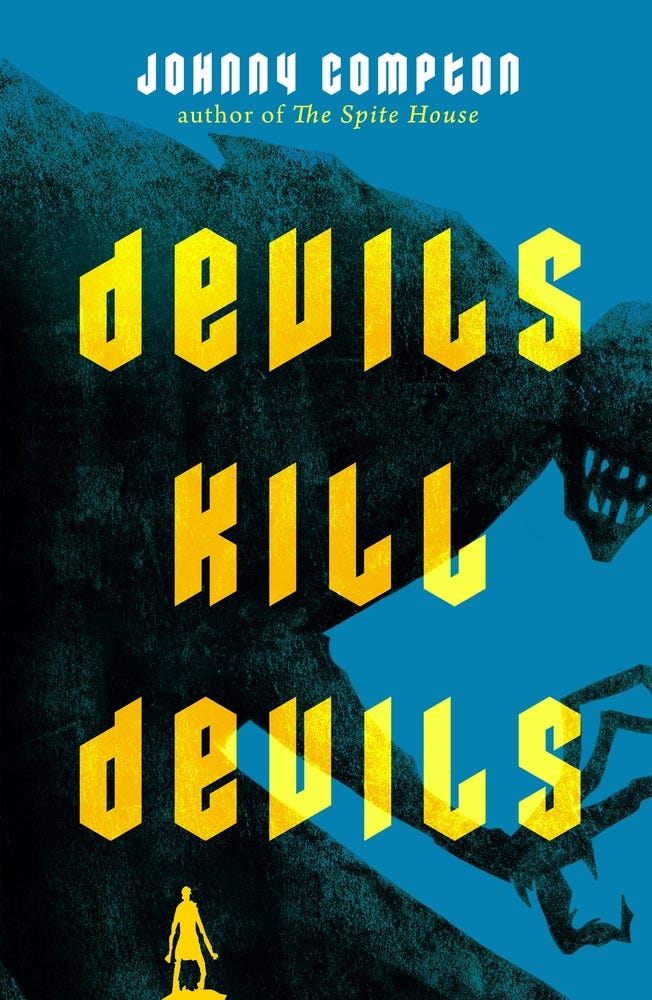

loved your thoughts on the princess of 72nd street! i'm finishing it today and am excited to chat w/ u more about it!!!
I've seen Halloween candy and decorations in stores since mid-August, and driving into town the other evening, I saw a couple of outdoor Christmas light displays twinkling, and one Christmas tree visible in someone's living room, though it's possible it was never taken down from last year. So, no, it's not too early for Halloween decorations.